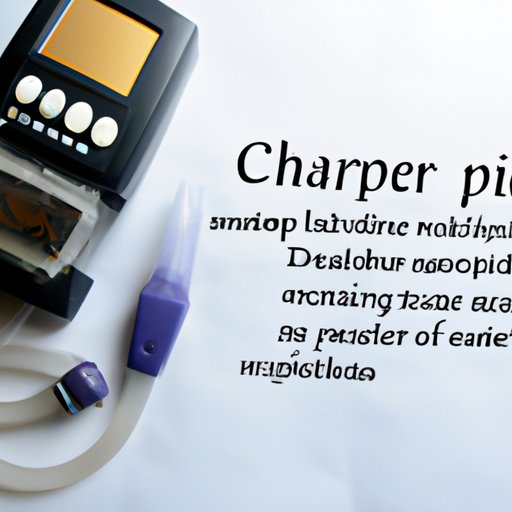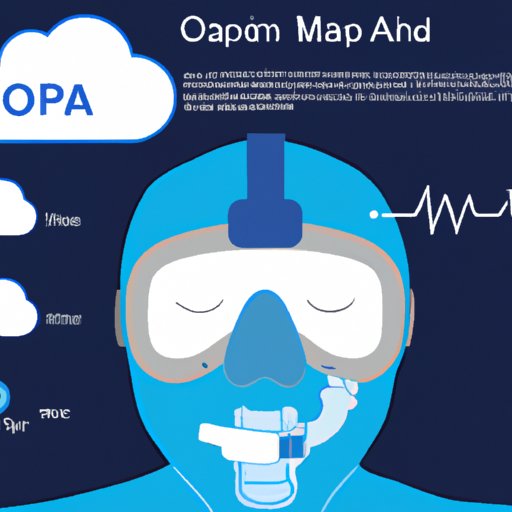Introduction
Sleep apnea is a serious medical condition that affects millions of people around the world. It is characterized by pauses in breathing during sleep, which can lead to a variety of health problems. One of the most common treatments for sleep apnea is continuous positive airway pressure (CPAP). This article will explore how does CPAP work and the benefits and risks associated with its use.
Explaining the Different Parts of a CPAP Machine
A CPAP machine consists of several components: a mask, a machine, a hose, and tubing. The mask is worn over the nose and mouth and is designed to provide a snug fit. The machine pumps air into the mask via the hose and tubing. The amount of air pressure is adjustable depending on the user’s needs.
How Does a CPAP Work to Treat Sleep Apnea?
When the CPAP machine is turned on, the air pressure is set to a specific level determined by the user’s doctor. This pressure helps keep the airways open while the user is sleeping. When the user inhales, the machine delivers a small burst of pressurized air through the mask and into the airways, keeping them open and preventing pauses in breathing.
The air pressure delivered by the CPAP machine can be adjusted based on the user’s needs and comfort level. If the pressure is too high or too low, the user may experience discomfort or difficulty breathing. In this case, the settings should be adjusted accordingly.

The Benefits of Using a CPAP Machine
Using a CPAP machine can provide numerous benefits for those suffering from sleep apnea. Studies have shown that using a CPAP machine can improve sleep quality and reduce symptoms of sleep apnea, such as daytime sleepiness and snoring. Additionally, the use of a CPAP machine can reduce the risk of developing more serious complications related to sleep apnea, such as cardiovascular disease.
Common Side Effects of CPAP Therapy
Although CPAP therapy is generally safe, there are some potential side effects. Common side effects include nasal congestion, dry mouth, and skin irritation. These side effects can usually be managed with proper use of the CPAP machine and other treatments, such as lubricants and humidifiers.

Tips for Adjusting to CPAP
Adjusting to CPAP therapy can take time. It is important to start with a low air pressure setting and gradually increase it until you find the right setting for you. Additionally, using a humidifier can help alleviate some of the common side effects of CPAP therapy. Finally, it is important to make sure the mask fits correctly to ensure maximum comfort and effectiveness of the machine.

What to Do if CPAP Therapy is Not Working
If CPAP therapy is not working for you, it is important to visit your doctor. They may suggest adjusting the settings on the machine or trying alternative therapies. Some alternative therapies include oral appliances and positional therapy. Your doctor can help determine the best treatment plan for you.
Conclusion
CPAP therapy is an effective treatment for sleep apnea. It is important to understand the different parts of a CPAP machine and how it works to treat sleep apnea. Additionally, it is important to be aware of the potential benefits and side effects of CPAP therapy, as well as tips for adjusting to CPAP. If CPAP therapy is not working, it is important to seek help from your doctor.
(Note: Is this article not meeting your expectations? Do you have knowledge or insights to share? Unlock new opportunities and expand your reach by joining our authors team. Click Registration to join us and share your expertise with our readers.)
